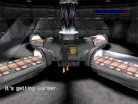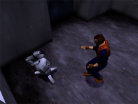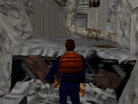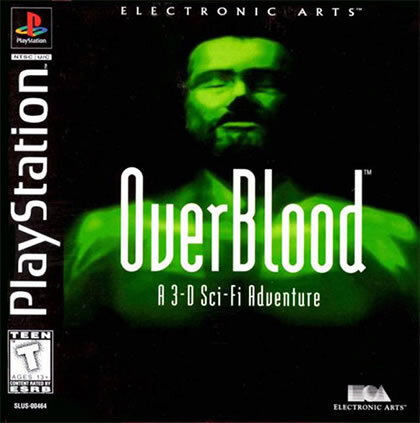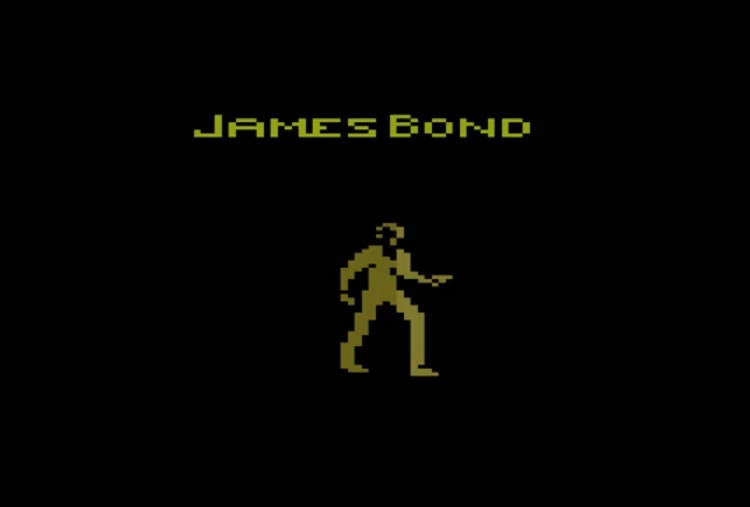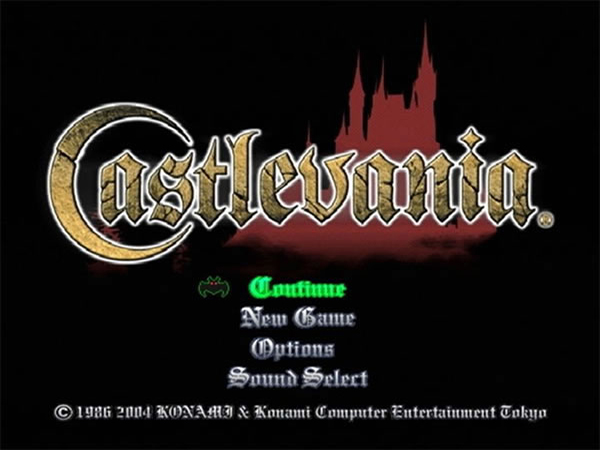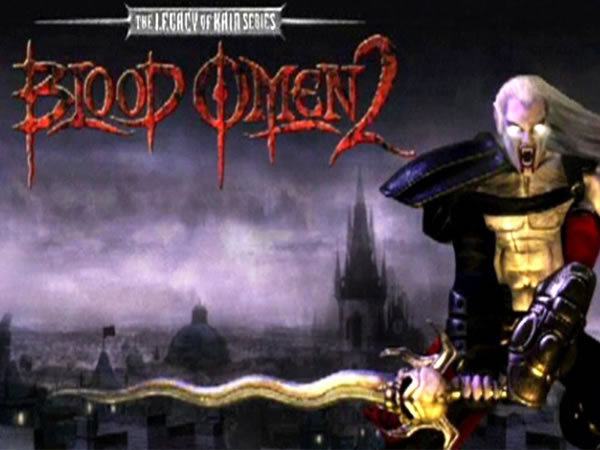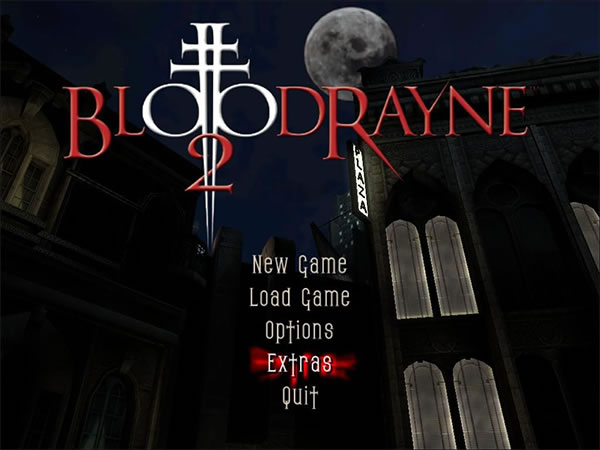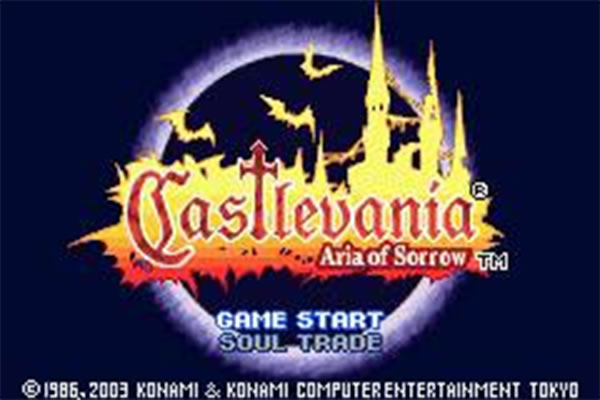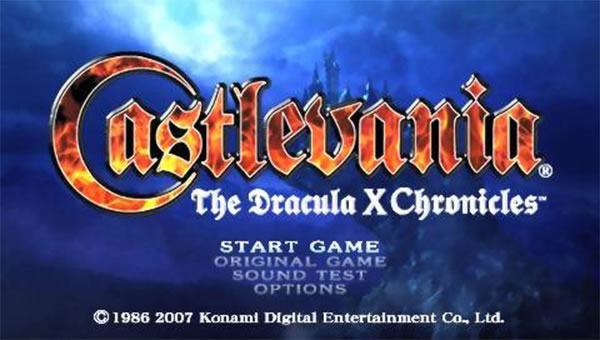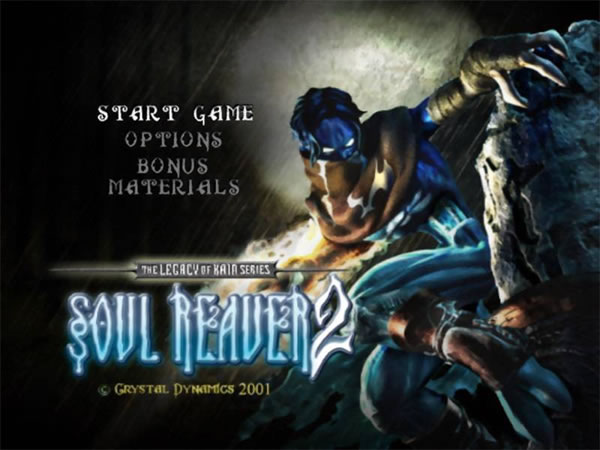- CLASSIC MAGAZINES
- REVIEW CREW
A show recapping what critics thought back
when classic games first came out! - NEXT GENERATION'S BEST & WORST
From the worst 1-star reviews to the best
5-stars can offer, this is Next Generation! - NINTENDO POWER (ARCHIVE)
Experience a variety of shows looking at the
often baffling history of Nintendo Power! - MAGAZINE RETROSPECTIVE
We're looking at the absolutely true history of
some of the most iconic game magazines ever! - SUPER PLAY'S TOP 600
The longest and most ambitious Super NES
countdown on the internet! - THEY SAID WHAT?
Debunking predictions and gossip found
in classic video game magazines! - NEXT GENERATION UNCOVERED
Cyril is back in this spin-off series, featuring the
cover critic review the art of Next Generation! - HARDCORE GAMER MAGAZING (PDF ISSUES)
Download all 36 issues of Hardcore Gamer
Magazine and relive the fun in PDF form!
- REVIEW CREW
- ELECTRONIC GAMING MONTHLY
- ELECTRONIC GAMING MONTHLY RANKS
From Mario to Sonic to Street Fighter, EGM
ranks classic game franchises and consoles! - ELECTRONIC GAMING MONTHLY BEST & WORST
Counting down EGM’s best and worst reviews
going year by year, from 1989 – 2009! - ELECTRONIC GAMING BEST & WORST AWARDS
11-part video series chronicling the ups and
downs of EGM’s Best & Worst Awards!
- ELECTRONIC GAMING MONTHLY RANKS
- GAME HISTORY
- GAME OVER: STORY BREAKDOWNS
Long-running series breaking down game
stories and analyzing their endings! - A BRIEF HISTORY OF GAMING w/ [NAME HERE]
Real history presented in a fun and pithy
format from a variety of game historians! - THE BLACK SHEEP
A series looking back at the black sheep
entries in popular game franchises! - INSTANT EXPERT
Everything you could possibly want to know
about a wide variety of gaming topics! - FREEZE FRAME
When something familiar happens in the games
industry, we're there to take a picture! - I'VE GOT YOUR NUMBER
Learn real video game history through a series
of number-themed episodes, starting at zero! - GREAT MOMENTS IN BAD ACTING
A joyous celebration of some of gaming's
absolute worst voice acting!
- GAME OVER: STORY BREAKDOWNS
- POPULAR SHOWS
- DG NEWS w/ LORNE RISELEY
Newsman Lorne Riseley hosts a regular
series looking at the hottest gaming news! - REVIEW REWIND
Cyril replays a game he reviewed 10+ years
ago to see if he got it right or wrong! - ON-RUNNING FEUDS
Defunct Games' longest-running show, with
editorials, observations and other fun oddities! - DEFUNCT GAMES QUIZ (ARCHIVE)
From online quizzes to game shows, we're
putting your video game knowledge to the test!- QUIZ: ONLINE PASS
Take a weekly quiz to see how well you know
the news and current gaming events! - QUIZ: KNOW THE GAME
One-on-one quiz show where contestants
find out if they actually know classic games! - QUIZ: THE LEADERBOARD
Can you guess the game based on the classic
review? Find out with The Leaderboard!
- QUIZ: ONLINE PASS
- DEFUNCT GAMES VS.
Cyril and the Defunct Games staff isn't afraid
to choose their favorite games and more! - CYRIL READS WORLDS OF POWER
Defunct Games recreates classic game
novelizations through the audio book format!
- DG NEWS w/ LORNE RISELEY
- COMEDY
- GAME EXPECTANCY
How long will your favorite hero live? We crunch
the numbers in this series about dying! - VIDEO GAME ADVICE
Famous game characters answer real personal
advice questions with a humorous slant! - FAKE GAMES: GUERILLA SCRAPBOOK
A long-running series about fake games and
the people who love them (covers included)! - WORST GAME EVER
A contest that attempts to create the worst
video game ever made, complete with covers! - LEVEL 1 STORIES
Literature based on the first stages of some
of your favorite classic video games! - THE COVER CRITIC
One of Defunct Games' earliest shows, Cover
Critic digs up some of the worst box art ever! - COMMERCIAL BREAK
Take a trip through some of the best and
worst video game advertisements of all time! - COMIC BOOK MODS
You've never seen comics like this before.
A curious mix of rewritten video game comics!
- GAME EXPECTANCY
- SERIES ARCHIVE
- NINTENDO SWITCH ONLINE ARCHIVE
A regularly-updated list of every Nintendo
Switch Online release, plus links to review! - PLAYSTATION PLUS CLASSIC ARCHIVE
A comprehensive list of every PlayStation
Plus classic release, including links! - RETRO-BIT PUBLISHING ARCHIVE
A regularly-updated list of every Retro-Bit
game released! - REVIEW MARATHONS w/ ADAM WALLACE
Join critic Adam Wallace as he takes us on a
classic review marathon with different themes!- DEFUNCT GAMES GOLF CLUB
Adam Wallace takes to the links to slice his way
through 72 classic golf game reviews! - 007 IN PIXELS
Adam Wallace takes on the world's greatest spy
as he reviews 15 weeks of James Bond games! - A SALUTE TO VAMPIRES
Adam Wallace is sinking his teeth into a series
covering Castlevania, BloodRayne and more! - CAPCOM'S CURSE
Adam Wallace is celebrating 13 days of Halloween
with a line-up of Capcom's scariest games! - THE FALL OF SUPERMAN
Adam Wallace is a man of steel for playing
some of the absolute worst Superman games! - THE 31 GAMES OF HALLOWEEN
Adam Wallace spends every day of October afraid
as he reviews some of the scariest games ever! - 12 WEEKS OF STAR TREK
Adam Wallace boldly goes where no critic has
gone before in this Star Trek marathon!
- DEFUNCT GAMES GOLF CLUB
- DAYS OF CHRISTMAS (ARCHIVE)
Annual holiday series with themed-episodes
that date all the way back to 2001!- 2015: 30 Ridiculous Retro Rumors
- 2014: 29 Magazines of Christmas
- 2013: 29 Questionable Power-Ups of Christmas
- 2012: 34 Theme Songs of Christmas
- 2011: 32 Game Endings of Christmas
- 2010: 31 Bonus Levels of Christmas
- 2009: 30 Genres of Christmas
- 2008: 29 Controls of Christmas
- 2007: 34 Cliches of Christmas
- 2006: 33 Consoles of Christmas
- 2005: 32 Articles of Christmas
- 2004: 31 Websites of Christmas
- 2003: 29 Issues of Christmas
- 2002: 28 Years of Christmas
- 2001: 33 Days of Christmas
- NINTENDO SWITCH ONLINE ARCHIVE
- REVIEW ARCHIVE
- FULL ARCHIVE
OverBlood
Comparisons can be very unfair. When Resident Evil became one of the biggest success stories of the first year of the PlayStation's lifespan, suddenly every game with horror in it ended up compared to Capcom's juggernaut. In fact, I first became aware of EA's OverBlood after reading a review from its release that spent half of the review saying that it sucked because it didn't match Resident Evil beat-for-beat. After playing it, I can definitely say that it is far different from Resident Evil and shouldn't have been compared to it. That doesn't mean it's a forgotten horror classic, though.
OverBlood focuses on a guy named Raz who wakes up from cryogenic sleep in a facility that's mostly deserted with no memory of who he is. I say "mostly deserted" because he does manage to find a small robot that he names Pipo, another amnesiac named Milly, and some people who were mutated by some kind of infection. When Raz discovers that he's infected as well, the quest for a cure begins. Like most of the greatest horror films ever made, the story takes time to get going while piling on the wonderfully thick atmosphere. Unlike the classic horror films, when the story ramps up, it becomes ridiculous rather than scary. I actually found myself giggling later on. The game can be finished in four hours, and there's no reason to return to it.
 Click For the Full Picture Archive
Click For the Full Picture Archive
Most of the complaints in the old reviews revolved around the lack of action, and those complaints are valid in some ways. In fact, Raz's first fight with one of the infected isn't until an hour into the game! However, the game wasn't trying to be an action-packed gore-fest. The game focuses more on puzzles, and those work reasonably enough. However, I do have two major complaints about those puzzles. First, critical items are invisible. Get used to hugging almost every surface hammering the X button hoping to stumble across something. The second problem is the lack of clues. For the puzzles that don't just involve using a specific character or item, too often I found myself trying things at random until I stumbled on the solution.
The aesthetics and mechanics are very hit-or-miss. It was ambitious to make the game fully-polygonal unlike Resident Evil which used rendered backgrounds. The camera can be switched between third- and first-person views making navigation a breeze. Unfortunately, the visuals are very plain. When not in the important rooms of the facility, you'll be staring at the same white-walled corridors constantly. It's actually easy to get lost since almost all the corridors look the same. The soundtrack is great, very atmospheric, but the voice acting is terrible with Pipo's bleeping sounding more annoying than R2-D2. The controls are very stiff which only really becomes a problem for the platform jumping segments.
OverBlood is an interesting little curiosity from the PS1 era, but it's not a very compelling game overall. Despite all the comparisons to Resident Evil back then, I'd prefer to think of it as a prototype for what Konami would do with Silent Hill later on. There's nothing really remarkable about OverBlood, average at best. It's a game that you'd forget as soon as you finish it.
OverBlood focuses on a guy named Raz who wakes up from cryogenic sleep in a facility that's mostly deserted with no memory of who he is. I say "mostly deserted" because he does manage to find a small robot that he names Pipo, another amnesiac named Milly, and some people who were mutated by some kind of infection. When Raz discovers that he's infected as well, the quest for a cure begins. Like most of the greatest horror films ever made, the story takes time to get going while piling on the wonderfully thick atmosphere. Unlike the classic horror films, when the story ramps up, it becomes ridiculous rather than scary. I actually found myself giggling later on. The game can be finished in four hours, and there's no reason to return to it.
 Click For the Full Picture Archive
Click For the Full Picture ArchiveMost of the complaints in the old reviews revolved around the lack of action, and those complaints are valid in some ways. In fact, Raz's first fight with one of the infected isn't until an hour into the game! However, the game wasn't trying to be an action-packed gore-fest. The game focuses more on puzzles, and those work reasonably enough. However, I do have two major complaints about those puzzles. First, critical items are invisible. Get used to hugging almost every surface hammering the X button hoping to stumble across something. The second problem is the lack of clues. For the puzzles that don't just involve using a specific character or item, too often I found myself trying things at random until I stumbled on the solution.
The aesthetics and mechanics are very hit-or-miss. It was ambitious to make the game fully-polygonal unlike Resident Evil which used rendered backgrounds. The camera can be switched between third- and first-person views making navigation a breeze. Unfortunately, the visuals are very plain. When not in the important rooms of the facility, you'll be staring at the same white-walled corridors constantly. It's actually easy to get lost since almost all the corridors look the same. The soundtrack is great, very atmospheric, but the voice acting is terrible with Pipo's bleeping sounding more annoying than R2-D2. The controls are very stiff which only really becomes a problem for the platform jumping segments.
OverBlood is an interesting little curiosity from the PS1 era, but it's not a very compelling game overall. Despite all the comparisons to Resident Evil back then, I'd prefer to think of it as a prototype for what Konami would do with Silent Hill later on. There's nothing really remarkable about OverBlood, average at best. It's a game that you'd forget as soon as you finish it.
HOME |
CONTACT |
NOW HIRING |
WHAT IS DEFUNCT GAMES? |
NINTENDO SWITCH ONLINE |
RETRO-BIT PUBLISHING
Retro-Bit |
Switch Planet |
The Halcyon Show |
Same Name, Different Game |
Dragnix |
Press the Buttons
Game Zone Online | Hardcore Gamer | The Dreamcast Junkyard | Video Game Blogger
Dr Strife | Games For Lunch | Mondo Cool Cast | Boxed Pixels | Sega CD Universe | Gaming Trend
Game Zone Online | Hardcore Gamer | The Dreamcast Junkyard | Video Game Blogger
Dr Strife | Games For Lunch | Mondo Cool Cast | Boxed Pixels | Sega CD Universe | Gaming Trend
Copyright © 2001-2025 Defunct Games
All rights reserved. All trademarks are properties of their respective owners.
All rights reserved. All trademarks are properties of their respective owners.






